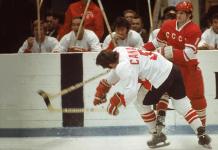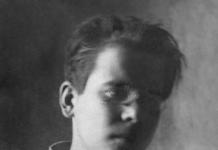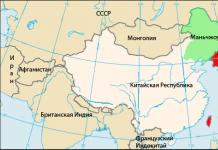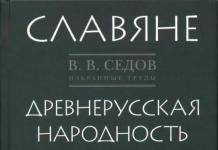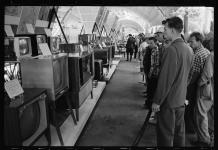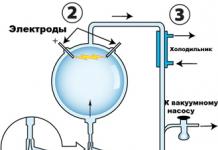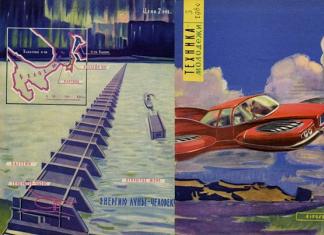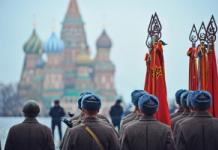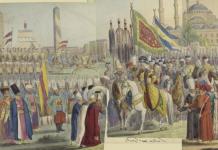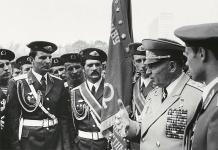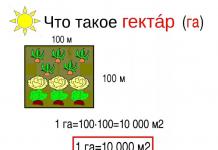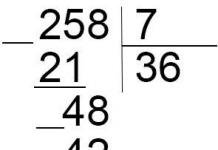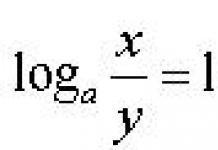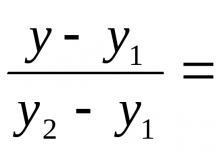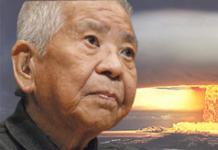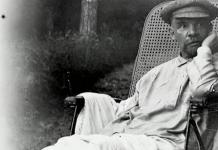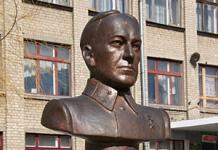On August 2, blue splashes over Russian cities, as well as water from park fountains. The most publicly connected branch of the military will celebrate the holiday. "Defend Russia" recalls the legendary "Uncle Vasya" - the one who created the Airborne Forces in their modern form.
There are no other divisions of the Russian army about such a number of myths and tales as about "Uncle Vasya's troops". It seems that strategic aviation flies the farthest, the presidential regiment makes a step like robots, space troops know how to peer beyond the horizon, the GRU special forces are the worst of all, strategic missile carriers are capable of destroying entire cities. But "there are no impossible tasks - there are landing troops."
There were many commanders of the Airborne Forces, but the most important commander was one.
Vasily Margelov was born in 1908. Until Yekaterinoslav became Dnepropetrovsk, Margelov worked at a mine, a stud farm, a forestry enterprise and a local deputy council. Only at the age of 20 did he enter the army. Measuring career steps and kilometers on the march, he participated in the Polish campaign of the Red Army and the Soviet-Finnish war.
In July 1941, the future "Uncle Vasya" became a regiment commander in a division of the people's militia, and 4 months later, very far away - on skis - he began to create the Airborne Forces.
As the commander of a special ski regiment of the Baltic Fleet marines, Margelov made sure that the vests were transferred from the marines to the "winged" ones. Already the division commander Margelov in 1944 became a hero Soviet Union for the release of Kherson. At the Victory Parade on June 24, 1945, the Major General printed a step as part of the columns of the 2nd Ukrainian Front.
Margelov headed the Airborne Forces in the year following Stalin's death. He left office three years before Brezhnev's death - an amazing example of team longevity.
It was with his command that not only the main milestones in the formation of the airborne troops were associated, but also the creation of their image as the most efficient troops in the entire huge Soviet army.
Margelov was not formally paratrooper number one during his entire service. His history of relations with the post of commander, and with the country and its regime, is similar to the career path of the commander-in-chief of the Soviet fleet, Nikolai Kuznetsov. He also commanded with a short break: Kuznetsov had four years, Margelov had two (1959-1961). True, unlike the admiral, who survived two disgraces, lost and received titles again, Margelov did not lose, but only grew by them, becoming an army general in 1967.
During the Great Patriotic War, the Airborne Forces were more tied to the ground. The infantry became winged under the command of Margelov.
First, "Uncle Vasya" jumped himself. During his service, he made more than 60 jumps - the last time in 65 years.

Margelov significantly increased the mobility of the Airborne Forces (in Ukraine, for example, they are called airmobile troops). Actively working with the military-industrial complex, the commander achieved the putting into service of aircraft and An-76, which even today release parachute dandelions into the sky. New parachute and shooting systems were developed for the paratroopers - the massive AK-74 was "cut" to.
They began to land not only people, but also military equipment - due to the enormous weight, parachute systems of several canopies with the placement of jet thrust engines were developed, which worked out for a short period of time when approaching the ground, thus extinguishing the landing speed.
In 1969, the first Russian airborne assault vehicle was put into service. The floating tracked BMD-1 was intended for landing - including the use of parachutes - from the An-12 and Il-76. In 1973, the world's first landing on the BMD-1 parachute system took place near Tula. The commander of the crew was Alexander Margelov's son, who in the 90s received the title of Hero of Russia for a similar landing in 1976.
In terms of influence on the perception of a subordinate structure by the mass consciousness, Vasily Margelov can be compared with Yuri Andropov.
If the term "public relations" existed in the Soviet Union, the commander of the Airborne Forces and the chairman of the KGB would certainly be considered cool "signalmen."
Andropov clearly understood the need to improve the image of the department, which inherited the memory of the people about the Stalinist repressive machine. Margelov was not up to the image, but it was with him that they came out that created their positive image. It was the commander who insisted that "In the zone of special attention" the fighters of the group of captain Tarasov, as part of the exercises conducting reconnaissance in the rear of the imaginary enemy, wear blue berets - a symbol of the paratroopers, obviously unmasking the scouts, but creating an image.

Vasily Margelov died at the age of 81, several months before the collapse of the USSR. Four of the five sons of Margelov linked their lives with the army.
Vasily Filippovich Margelov was born on December 27, 1908 in Dnepropetrovsk, died at the age of 82 on March 4, 1990 in Moscow. The legendary special forces soldier who turned the USSR Airborne Forces from "penalties" into the elite of the USSR Armed Forces, long-term commander of the airborne forces (1954-1979), army general, Hero of the Soviet Union.
Feat of Vasily Margelov.
Vasily Margelov became a legend during his lifetime
The years of the Soviet-Finnish war (1939-1940), commanding a separate reconnaissance ski battalion of the 122nd division, made several daring raids on the enemy's rear, during one of which he captured officers of the German General Staff - officially at that time allies of the USSR;
- in 1941, his "land commander" was put at the head of the Baltic Fleet Marine Regiment. Contrary to prejudices that "it will not take root," Margelov became "one of our own," and the Marines called him, a major, "captain of the 3rd rank," emphasizing their respect for the commander. The regiment was considered the "personal guard of the fleet commander of Tributs", which he sent in besieged Leningrad where he could not even send the penal battalion. For example, during the assault on Pulkovo Heights by the Germans, Margelov's regiment was parachuted behind enemy lines on the Ladoga coast in the direction of Lipka - Shlisselburg, and the commander of the Sever group of forces, Field Marshal von Leeb, was forced to stop the assault on Pulkovo, transferring units to eliminate the landing. Margelov was seriously wounded and miraculously survived;
Since 1943, Margelov, the division commander, took the "Saur-Mogila" by storm, liberated Kherson (awarded the Hero's Star), and in 1945 the Germans called Margelov "Soviet Skorzeny" after the divisions of the SS Panzer Corps "Death's Head" and "Great Germany" surrendered to him personally without a fight;

On May 2, 1945, Margelov was tasked with capturing or destroying the remnants of 2 of the most famous SS units that were rushing into the zone of responsibility of the Americans. Then Vasily Margelov dared to take a decisive step. He, along with a group of officers who were armed with grenades and machine guns, accompanied by a battery of 57-mm cannons, arrived at the group's headquarters, after which he ordered the battalion commander to set up direct-fire guns at the enemy headquarters and open fire if he did not return in ten minutes.
Margelov went to the headquarters and presented the Germans with an ultimatum: either they surrender and save their lives, or they will be completely destroyed using all the means available to the division: “by 4:00 am - the front to the east. Light weapons: machine guns, machine guns, rifles - in stacks, ammunition - nearby. The second line - military equipment, guns and mortars - vents down. Soldiers and officers - in line to the west, "- wrote later Vasily Margelov in his book. He gave a little time for reflection: "while his cigarette burns out." And the Germans surrendered. An accurate count of trophies showed the following figures: 2 generals, 806 officers, 31,258 non-commissioned officers, 77 tanks and self-propelled guns, 5847 trucks, 493 trucks, 46 mortars, 120 guns, 16 steam locomotives, 397 carriages.
Vasily Margelov is the “father of the Airborne Forces”. In 1950, the airborne troops were considered a kind of penal battalion, and were never appreciated. They were compared to penalty boxers, and the abbreviation itself was deciphered: "you are unlikely to come back home." However, soon after the arrival of a new commander, Vasily Margelov, the Airborne Forces turned into truly elite troops.
Just a few years later, primitive equipment was replenished with a Kalashnikov assault rifle with a special folding butt so that it did not interfere with the deployment of the parachute, lightweight aluminum armor, RPG-16 anti-tank grenade launcher, and Centaur platforms for dropping people in combat vehicles. The guardsmen of the Airborne Forces received official permission from the USSR Ministry of Defense to wear blue berets and vests, which were first shown during the 1969 military parade on Red Square. In 1973, the world's first landing on the BMD-1 parachute system took place near Tula. The commander of the crew was Alexander Margelov's son. The competition in the Ryazan Airborne School overlapped the figures of MGIMO, Moscow State University and VGIK. The comic-fatalistic name of the Airborne Forces was replaced in the 70s by "Uncle Vasya's Troops." This is exactly what the Airborne Forces themselves called themselves, thereby emphasizing the special warmth of feelings for their legendary commander.

During the training of the paratroopers, Margelov paid special attention to parachute jumping. He himself first appeared under the dome only in 1948, already with the rank of general: “Until the age of 40, I had a vague idea of what a parachute was, I never dreamed of jumping. It happened by itself, or rather, as it should be in the army, by order. I am a military man, if necessary, ready to go to hell. And so it was necessary, already being a general, to make the first parachute jump. The impression, I can tell you, is incomparable. "

Vasily Margelov himself once said: "Anyone who has never left a plane in his life, from where cities and villages seem like toys, who have never experienced the joy and fear of free fall, whistling in their ears, a stream of wind blowing into the chest, he never will understand the honor and pride of a paratrooper. " He himself subsequently, despite his already middle-aged years, made about 60 jumps, the last at the age of 65.
In 1968, after the occupation of Czechoslovakia, Margelov managed to convince the Minister of Defense Marshal Grechko that the winged guard should have vests and berets. Even before that, he emphasized that the airborne troops should adopt the traditions of their "elder brother" - the marines, and continue them with honor. “For this, I introduced vests to the paratroopers. Only the stripes on them match the color of the sky - blue. "
Vasily Margelov and social networks.
The documentary "Vasily Margelov and the Airborne Forces" has been uploaded on Youtube video hosting:
Vasily Margelov's awards.




December 14, 1988 and April 30, 1975 - two Orders "For Service to the Motherland in the Armed Forces of the USSR", second and third degrees, respectively.

Biography of Vasily Margelov.

1921 - graduated from a parish school, entered a leather workshop as an apprentice, soon became a master's assistant;
1923 - entered the local Khleboprodukt as a laborer;
Since 1924, he worked in Yekaterinoslavl (now Dnepropetrovsk) at the mine. MI Kalinin as a laborer, then as a horseman (a driver of horses carrying trolleys);
1925 - sent to the BSSR as a forester in the timber industry;
1927 - chairman of the working committee of the timber industry, elected to the local Council;
1928 - drafted into the Red Army;
April 1931 - graduated from the Order of the Red Banner of Labor of the United Belarusian Military School named after Central Executive Committee of the BSSR with honors. Appointed commander of the machine gun platoon of the regimental school of the 99th rifle regiment of the 33rd rifle division (Mogilev, Belarus);
Since 1933 - platoon commander in the Order of the Red Banner of Labor OBVS them. Central Executive Committee of the BSSR;
Since 1937 - platoon commander of the Order of the Red Banner of Labor, Minsk Military Infantry School named. M. I. Kalinina;
February 1934 - appointed assistant company commander;
May 1936 - commander of a machine-gun company;
October 25, 1938 - commanded the 2nd battalion of the 23rd Infantry Regiment of the 8th Infantry Division. Dzerzhinsky Belarusian Special Military District;
1939-1940 - commander of the Separate Reconnaissance Ski Battalion of the 596th Infantry Regiment of the 122nd Division;
From October 1940 - commander of the 15th separate disciplinary battalion of the Leningrad Military District;
July 1941 - Commander of the 3rd Guards Rifle Regiment of the 1st Guards Division of the People's Militia of the Leningrad Front;
Since 1944 - commander of the 49th Guards Rifle Division of the 28th Army of the 3rd Ukrainian Front;
At the Victory Parade in Moscow, Guards Major General Margelov commanded a battalion in the combined regiment of the 2nd Ukrainian Front;
1950-1954 - commander of the 37th Guards Airborne Svirsky Red Banner Corps;
1954-1959 - Commander of the Airborne Forces;
January 1979 - in the group of general inspectors of the USSR Ministry of Defense. He went on business trips to the Airborne Forces, was the chairman of the State Examination Commission at the Ryazan Airborne School;
March 4, 1990 - Vasily Filippovich Margelov died in Moscow. Buried at the Novodevichy cemetery.

Perpetuation of the memory of Vasily Margelov.
On May 6, 2005, a departmental medal of the Ministry of Defense of the Russian Federation “General of the Army Margelov” was established;
2005 - a memorial plaque was installed on a house in Moscow in the Sivtsev Vrazhek lane, where Margelov lived the last 20 years of his life.
Monuments to Vasily Margelov were erected in:
Taganrog;

Chisinau;

Dnepropetrovsk;

Yaroslavl;



as well as in many other settlements.
The name of Margelov is the Ryazan Higher Airborne Command School, the Department of the Airborne Forces of the Combined Arms Academy of the Armed Forces of the Russian Federation, the Nizhny Novgorod Cadet Corps (NKSHI);
The square in St. Petersburg, in the city of Belogorsk, the Amur region, the square in Ryazan, streets in Moscow, Vitebsk (Belarus), Omsk, Pskov, Taganrog, Tula and Zapadnaya Litsa, in Buryatia: in Ulan-Ude and the border the village of Naushki, avenue and a park in the Zavolzhsky district of Ulyanovsk.
How often do Yandex users from Ukraine search for information about Vasily Margelov in a search engine?

As you can see from the photo, users of the Yandex search engine in October 2015 were interested in the query "Vasily Margelov" 241 times.

And according to this graph, you can see how the interest of Yandex users to the query "Vasily Margelov" has changed over the past two years:
The highest interest in this request was recorded in August 2015 (about 1.2 thousand requests);
How do Ukrainians assess the merits of Vasily Margelov?

_____________________
* If you find an inaccuracy or error, please inform [email protected] site .
** If you have materials about other heroes of Ukraine, please send them to this mailbox
"Suvorov of the twentieth century" - this is how General of the Army Vasily Filippovich Margelov (1908 - 1990) began to call it during his lifetime Western historians (for a long time it was forbidden for the Soviets to call this name in the press for reasons of secrecy).
Having commanded the Airborne Forces for a total of almost a quarter of a century (1954 - 1959, 1961 - 1979), he turned this branch of the military into a formidable striking force that knew no equal.
But not only as an outstanding organizer, Vasily Filippovich was remembered by his contemporaries. Love for the Motherland, remarkable leadership skills, endurance and selfless bravery were organically combined in him with the greatness of the soul, modesty and crystal honesty, a kind-hearted, truly paternal attitude towards the soldier.
Let us turn over some pages of the book of his fate, worthy of the pen and master of the detective genre, and the creator of the heroic epic ...
How a paratrooper got a vest
In the Soviet-Finnish War of 1940, Major Margelov was the commander of the Separate Reconnaissance Ski Battalion of the 596th Infantry Regiment of the 122nd Division. His battalion carried out daring raids on enemy rear lines, set up ambushes, inflicting heavy damage on the enemy. In one of the raids, it was even possible to capture a group of officers of the Swedish General Staff, which gave rise to the Soviet Government to make a diplomatic demarche about the actual participation of the allegedly neutral Scandinavian state in hostilities on the side of the Finns. This step had a sobering effect on the Swedish king and his cabinet: Stockholm did not dare to send its soldiers into the snows of Karelia ...
The experience of ski raids on enemy rear areas was recalled at the end of autumn 1941 in besieged Leningrad. Major V. Margelov was instructed to lead the First Special Ski Regiment of sailors of the Red Banner Baltic Fleet, formed from volunteers.
Veteran of this unit N. Shuvalov recalled:
- As you know, sailors are a peculiar people. In love with the sea, they do not particularly favor their land brothers. When Margelov was appointed commander of a regiment of marines, some used to say that he would not take root there, the "brothers" would not accept him.
However, this prophecy did not come true. When the regiment of sailors was built to present to the new commander, Margelov, after the command "Attention!" seeing many gloomy faces who looked at him not particularly friendly, instead of the words of greeting “Hello, comrades!”, without hesitation, he shouted loudly:
- Hello, claws!
A moment - and in the ranks not a single gloomy face ...
Many glorious feats were accomplished by sailors-skiers under the command of Major Margelov. The tasks were set personally by the commander of the Baltic Fleet, Vice-Admiral Tributs.
Deep daring skiers' raids on the German rear in the winter of 1941-42 were an unabated headache for the command of the Nazi Army Group North. What was at least a landing on the coast of Ladoga in the direction of Lipka - Shlisselburg, which alarmed Field Marshal von Leeb so much that he began to withdraw troops from Pulkovo to eliminate him, tightening the loop of the blockade of Leningrad.
 Two decades later, the commander of the Airborne Forces, General of the Army Margelov, ensured that the paratroopers received the right to wear vests.
Two decades later, the commander of the Airborne Forces, General of the Army Margelov, ensured that the paratroopers received the right to wear vests.
- The daring of the "brothers" sunk into my heart! - he explained. - I want the paratroopers to adopt the glorious traditions of their elder brother - the marines and continue them with honor. For this, I introduced the vests to the paratroopers. Only the stripes on them match the color of the sky - blue ...
When, at a military council chaired by the Minister of Defense, the Commander-in-Chief of the Navy, Admiral of the Fleet of the Soviet Union S.G. Gorshkov, began to blame that, they say, the paratroopers were stealing vests from sailors, Vasily Filippovich sharply objected to him:
- I myself fought in the Marine Corps and I know what the paratroopers deserve and what the sailors deserve!
And Vasily Filippovich fought with his "marines" famously. Here's another example. In May 1942, in the Vinyaglovo area near the Sinyavinsky heights, about 200 enemy infantrymen broke through the defense sector of the neighboring regiment and went into the rear of the Margelovites. Vasily Filippovich quickly gave the necessary orders and lay down at the Maxim machine gun himself. Then he personally destroyed 79 fascists, the rest were finished off by the reinforcements that arrived in time.
By the way, during the defense of Leningrad, Margelov always had a heavy machine gun at hand, from which in the morning he performed a kind of small arms charge: he "cut" bursts of tops of trees. Then he sat on a horse and practiced in the wheelhouse with a saber.
In offensive battles, the regiment commander more than once personally raised his battalions to the attack, fought in the first ranks of his fighters, dragging them to victory in hand-to-hand combat, where he had no equal. Because of such terrible battles, the Nazis nicknamed the Marines "striped death".
Officer's ration - into the soldier's cauldron
Caring for a soldier was never a secondary matter for Margelov, especially in the war. His former fellow soldier, Guard Senior Lieutenant Nikolai Shevchenko recalled that, having taken over the 13th Guards Rifle Regiment in 1942, Vasily Filippovich began to increase its combat effectiveness by improving the organization of food for all personnel.
At that time, the officers in the regiment were fed separately from the soldiers and sergeants. The officers of the m were entitled to a reinforced ration: in addition to the general standard, they received animal oil, canned fish, biscuits or biscuits, tobacco "Golden Fleece" or "Kazbek" (non-smokers were given chocolate). But, besides this, some battalion commanders and company commanders brought in personal chefs at the general catering unit. It is easy to understand that some of the soldier's cauldron went to the officer's table. This was discovered by the regiment commander when he went around the subunits. He always started it with an examination of the battalion kitchens and a sample of the soldiers' food.
On the second day of Lieutenant Colonel Margelov's stay in the unit, all of its officers had to eat from a common boiler along with the soldiers. The regiment commander ordered his doppayk to be transferred to the common boiler. Soon other officers began to do the same. "Dad set a good example for us!" - recalled the veteran Shevchenko. Surprisingly, Batey Vasily Filippovich was called in all the regiments and divisions that he happened to command ...
God forbid, if Margelov noticed that the fighter had leaky shoes or dilapidated clothes. At this point, the business executive got it to the fullest. Once, noticing that the sergeant-machine-gunner was “asking for porridge” at the forefront of his boots, the regiment commander called the chief of clothing supplies to him and ordered him to exchange shoes with this soldier. And he warned that if he saw something like that again, he would immediately transfer the officer to the front line.
Vasily Filippovich hated cowards, weak-willed, lazy people. Stealing with him was simply impossible, for he punished mercilessly for him ...
 Hot Snow
Hot Snow
Whoever read Yuri Bondarev's novel Hot Snow or saw the movie of the same name based on this novel, let him know: the prototype of the heroes that stood in the way of Manstein's armada, which was trying to break the encirclement around Paulus's 6th Army in Stalingrad, were the Margelovites. It was they who found themselves in the direction of the main blow of the fascist tank wedge and managed to prevent a breakthrough, having held out until the arrival of reinforcements.
In October 1942, Guard Lieutenant Colonel Margelov became the commander of the 13th Guards Rifle Regiment, which was part of the 2nd Guards Army of Lieutenant General R. Ya. Malinovsky, which was formed specifically to complete the defeat of the enemy that had broken through into the Volga steppes. For two months, while the regiment was in reserve, Vasily Filippovich intensely prepared his soldiers for fierce battles for the Volga stronghold.
Near Leningrad, more than once he had to engage in single combat with fascist tanks, he knew their vulnerabilities well. And now he personally taught tank destroyers, showing armor-piercing soldiers how to open a trench in full profile, where and from what distances to aim with an anti-tank rifle, how to throw grenades and Molotov cocktails.
When the Margelovites held their defenses at the turn of the r. Myshkov, having taken the blow of the Goth tank group, advancing from the Kotelnikovsky area to join the Paulus breakout group, they were not afraid of the newest heavy Tiger tanks, did not flinch in front of the many times superior enemy. They did the impossible: in five days of fighting (from December 19 to December 24, 1942), without sleep or rest, suffering heavy losses, they burned and knocked out almost all enemy tanks in their direction. At the same time, the regiment retained its combat effectiveness!
In these battles, Vasily Filippovich was severely shell-shocked, but did not leave the formation. He met the new year 1943 with his fighters, with the Mauser in hand, dragging the attacking chains to the assault on the Kotelnikovsky farm. This swift rush of units of the 2nd Guards Army put a fat point in the Stalingrad epic: the last hopes of Paulus's army for the deblockade melted away like smoke. Then there was the liberation of Donbass, the crossing of the Dnieper, the fierce battles for Kherson and the "Yassko-Kishinev Cannes" ... The 49th Guards Kherson Red Banner Order of Suvorov Rifle Division - Margelov's division deserved thirteen commendations from the Supreme Commander-in-Chief!
The final chord is the bloodless capture in May 1945 on the border between Austria and Czechoslovakia of the SS Panzer Corps, which was breaking through to the West to surrender to the Americans. This included the elite of the armored forces of the Reich - the SS divisions "Great Germany" and "Death's Head".
As the best of the best Guards, Major General Hero of the Soviet Union V.F. Margelov (1944), the leadership of the 2nd Ukrainian Front entrusted the honor of commanding a front-line consolidated regiment at the Victory Parade in Moscow on June 24, 1945.
After graduating from the Higher Military Academy in 1948 (since 1958 - the Military Academy of the General Staff), Vasily Filippovich took over the Pskov Airborne Division.
This appointment was preceded by a meeting between Major General V. Margelov and the Minister of Defense of the USSR, Marshal of the Soviet Union Nikolai Bulganin. There was another general in the office, also a Hero of the Soviet Union.
The Minister of Defense began the conversation with kind words about the Airborne Forces, their glorious combat past, about the fact that a decision had been made to develop this relatively young branch of the army.
- We believe in them and consider it necessary to strengthen them with combat generals who distinguished themselves during the Great Patriotic War. What is your opinion, comrades?
That, the second general, began to complain about the wounds received at the front, said that the doctors did not recommend him to make parachute jumps. In general, he refused the minister's proposal.
General Margelov, who had many wounds in three wars, including heavy ones, and even in his legs, asked in response a single question:
- When can I go to the troops?
“Today,” replied the Minister of Defense, and shook his hand tightly.
Margelov understood that he would have to start from scratch and, as a beginner, comprehend the intricate science of amphibious assault. But he knew something else: there is a special attraction in this type of troops - insolence, a strong male bond.
Years later, he told a reporter for the Krasnaya Zvezda newspaper:
Until the age of 40, I had a vague idea of what a parachute was, and I never dreamed of jumping in my dreams. It happened by itself, or rather, as it should be in the army, by order. I am a military man, if necessary, ready to go to hell. And so it was necessary, already being a general, to make the first parachute jump. The impression, I can tell you, is incomparable. A dome opens above you, you float in the air like a bird - by God, I want to sing! I began to sing. But delight alone will not leave. I was in a hurry, did not follow the ground, in the end I had to walk for two weeks with a bandaged leg. Got a lesson. Parachuting is not only romance, but also great work and impeccable discipline ...
Then there will be many jumps - with weapons, day and night, from high-speed military transport aircraft. During his service in the Airborne Forces, Vasily Filippovich made more than 60 of them. The last one was at the age of 65.
Anyone who has never left a plane in his life, whence cities and villages seem like toys, who have never experienced the joy and fear of a free fall, whistling in their ears, a stream of wind blowing in the chest, will never understand the honor and pride of a paratrooper, - Margelov will say somehow.
What did Vasily Filippovich see when he accepted the 76th Guards Airborne Division Chernigov? The material and technical base of combat training is at zero. The simplicity of the sports equipment was discouraging: two springboards for jumping, a cradle for a balloon suspended between two poles, and the skeleton of an aircraft that vaguely resembled an airplane or glider. Injuries and even deaths are common. If Margelov was a beginner in the landing business, then in the organization of combat training, as they say, he ate the dog.
In parallel with combat training, no less important work was going on to equip the personnel and families of officers. And here everyone was surprised by Margelov's persistence.
 “A soldier must be well-fed, clean in body and strong in spirit,” Vasily Filippovich liked to repeat the Suvorov statement. It was necessary - and the general became a real foreman, as he called himself without any irony, and on his desktop, mixed with plans for combat training, exercises, landing lay calculations, estimates, projects ...
“A soldier must be well-fed, clean in body and strong in spirit,” Vasily Filippovich liked to repeat the Suvorov statement. It was necessary - and the general became a real foreman, as he called himself without any irony, and on his desktop, mixed with plans for combat training, exercises, landing lay calculations, estimates, projects ...
Working in his usual mode - day and night - day away, General Margelov quickly achieved that his unit became one of the best in the airborne troops.
In 1950, he was appointed commander of the airborne corps in the Far East, and in 1954, Lieutenant General V. Margelov led the Airborne Forces.
And he soon proved to everyone that he was not a simple-minded campaigner, as some perceived Margelov, but a man who saw the prospects of the Airborne Forces, who had a great desire to turn them into the elite of the Armed Forces. This required breaking stereotypes and inertia, gaining the trust of active, energetic people, and involving them in joint productive work. Over time, V. Margelov formed a circle of like-minded people carefully selected and nurtured by him. And the outstanding sense of the new, the military authority and the ability of the commander to work with people made it possible to achieve the set goals.
1970, operational-strategic exercise "Dvina". This is what the newspaper of the Belarusian Military District "To the Glory of the Motherland" wrote about them: “Belarus is a country of forests and lakes, and it is incredibly difficult to find a landing site. The weather was not pleasing, but also did not give cause for despondency. Fighter-attack aircraft ironed the ground, from the commentator's booth sounded: "Attention!" - and the gaze of those present turned upward.
Large points separated from the first aircraft - these are military equipment, artillery, cargo, and then paratroopers fell from the An-12 hatches like peas. But the crown of the drop was the appearance in the air of four "Anteyev". In a matter of minutes, a whole regiment is already on the ground!
When the last paratrooper touched the ground, V.F. Margelov stopped the stopwatch on the commander's watch and showed it to the Minister of Defense. It took more than 22 minutes for eight thousand paratroopers and 150 units of military equipment to be delivered to the rear of the "enemy".
Brilliant results in the large exercises "Dnepr", "Berezina", "South" ... It has become common practice: to raise airborne troops, say, in Pskov, to make a long flight and land near Fergana, Kirovabad or Mongolia. Commenting on one of the teachings, Margelov told the Krasnaya Zvezda correspondent:
- The use of airborne assault has become practically unlimited. We, for example, have this type of combat training: on the map of the country, a point is randomly selected where the troops are dropped. Warriors parachutists jump to a completely unfamiliar area: taiga and deserts, lakes, swamps and mountains ...
It was after the exercises "Dvina", having declared gratitude to the guardsmen for their courage and military skill, the commander, as if by chance, asked:
Margelov could be understood: there was a need to reduce the time required to prepare airborne units for battle after landing. Landing of military equipment from one aircraft, and crews from another led to the fact that the spread was sometimes up to five kilometers. While the crews were looking for equipment, it took a long time.
A little later, Margelov returned to this idea again:
- I understand that it is difficult, but no one except us will do it.
Moreover, when - it was rather difficult to make a fundamental decision to conduct the first such experiment - Vasily Filippovich proposed his candidacy for participation in the first test of this kind, the Minister of Defense and the Chief of the General Staff were categorically opposed.
However, even without this, legends circulated about the military leader's courage. It manifested itself not only in a combat situation. At one of the festive receptions, where they could not but invite the disgraced Marshal Georgy Konstantinovich Zhukov, Vasily Filippovich, stretched out at attention, congratulated him on the holiday. Zhukov, being the Minister of Defense, repeatedly observed the actions of the paratroopers in the exercises and expressed satisfaction with their high training, admired their courage and courage. General Margelov was proud of the self-respect of such military leaders, and therefore did not change his attitude towards honored people in favor of temporary workers and high-ranking sycophants.
 Uncle Sam's troops and Uncle Vasya's troops
Uncle Sam's troops and Uncle Vasya's troops
In the late spring of 1991, the USSR Minister of Defense Marshal of the Soviet Union DT Yazov paid an official visit to the United States.
Returning to Moscow, the minister met with officers from the Information Department of the Ministry of Defense.
Subsequently, reflecting on this meeting, which lasted for more than two hours in the hall, where the meetings of the Collegium of the Ministry of Defense were usually held, I came to the conclusion that communication with us, rank-and-file employees of the department, was primarily intended to convey to the general public through officers who, on duty, maintain contacts with the press, his very skeptical opinion about the merits of military equipment of the richest power in the world and about the level of preparedness of American "pros", which were then enthusiastically admired by the magazine "Ogonyok" and related publications.
While visiting the military base at Fort Bragg, the Soviet Defense Minister was invited to a demonstration exercise of one of the parachute battalions of the famous "Devils Regiment" - the 82nd US Airborne Division. This division became famous for participating in almost all post-war conflicts in which the United States intervened (Dominican Republic, Vietnam, Grenada, Panama, etc.). She was the first to land in the Middle East before the start of the anti-Iraqi "Desert Storm" in 1990. In all operations, the "devils" were at the forefront of the attack as the most dexterous, courageous, invincible.
And it was these "Satan's understudies" that were instructed to surprise the Soviet minister with a class of skill and fearlessness. They were parachuted. Part of the battalion landed in combat vehicles. But the effect of the "show" turned out to be the opposite of what was expected, because Dmitry Timofeevich could not talk about what he saw in North Carolina without a bitter grin.
- How would I rate you for such a landing? - Asked, squinting slyly, the Minister of Defense of the then deputy commander of the Airborne Forces for combat training, Lieutenant General E. N. Podkolzin, who was part of the Soviet military delegation.
- You would rip my head off, comrade minister! - Evgeny Nikolaevich rapped out.
It turns out that almost all the American paratroopers who were thrown out of aircraft in combat vehicles were seriously injured and maimed. There were also those who died. Having landed, more than half of the cars did not move ...
It’s hard to believe, but even in the early 90s, the vaunted American professionals did not have the same equipment as ours and did not possess the secrets of the safe landing of winged infantry units on equipment that were mastered in the “Uncle Vasya’s troops” (as The airborne troops called themselves, hinting at the special warmth of feelings for the commander) back in the 70s.
And it all began with the courageous decision of Margelov to shoulder the responsibility of a pioneer. Then, in 1972, in the USSR, tests of the recently created Centaur system were in full swing - for dropping people inside an airborne assault vehicle on parachute platforms. The experiments were risky, so they started on animals. Not everything went smoothly: either the canopy of the parachute was torn, or the active braking engines did not work. One of the jumps even ended with the death of the dog Buran.
Something similar happened with Western testers of identical systems. True, they experimented on humans there. A man sentenced to death was put in a combat vehicle, which was thrown from an airplane. It crashed, and for a long time it was considered inexpedient to continue development work in this direction in the West.
 Despite the risk, Margelov believed in the possibility of creating safe systems for the landing of people on equipment and insisted on complicating the tests. Since in the future, the "dog" jumps were normal, he sought to move to a new phase of R&D - with the participation of warriors. In early January 1973, he had a difficult conversation with the Minister of Defense of the USSR, Marshal of the Soviet Union A.A. Grechko.
Despite the risk, Margelov believed in the possibility of creating safe systems for the landing of people on equipment and insisted on complicating the tests. Since in the future, the "dog" jumps were normal, he sought to move to a new phase of R&D - with the participation of warriors. In early January 1973, he had a difficult conversation with the Minister of Defense of the USSR, Marshal of the Soviet Union A.A. Grechko.
- Do you understand, Vasily Filippovich, what are you going on, what are you risking? - Andrei Antonovich urged Margelova to abandon his plans.
- I understand perfectly, that's why I stand on my own, - answered the general. - And those who are ready for the experiment also understand everything perfectly.
On January 5, 1973, the historic leap took place. For the first time in the world, a crew was parachuted inside the BMD-1 on parachute-platform means. It included Major L. Zuev and Lieutenant A. Margelov - in the car next to the experienced officer was the commander's youngest son, Alexander, at that time a young engineer of the Scientific and Technical Committee of the Airborne Forces.
Only a very courageous person would have dared to send his son to such a complex, unpredictable experiment. It was an act akin to the feat of Lieutenant General Nikolai Raevsky, when Kutuzov's favorite in 1812, near Saltanovka, fearlessly led his young sons to the front of the battalions trembling from the French canister, and with this stunning example breathed firmness into the discouraged grenadiers, held the position, deciding the outcome of the battle. This kind of sacrificial heroism is a unique phenomenon in world military history.
- A combat vehicle was dropped from the AN-12, five domes were opened, - Alexander Vasilyevich Margelov, now an employee of the Ministry of Foreign Economic Relations, recalled the details of the unprecedented jump. - Of course, it is dangerous, but one thing reassured me: the system has been successfully applied for more than one year. True, without people. We landed normally then. In the summer of 1975, on the basis of the parachute regiment, which was then commanded by Major V. Achalov, Lieutenant Colonel L. Shcherbakov and I inside the BMD and four officers outside, in the cockpit of the joint landing, jumped again ...
Vasily Filippovich was awarded the USSR State Prize for this bold innovation.
The Centaur was replaced (not least thanks to the commander of the Airborne Forces, who persistently argued in the country's highest party and government authorities that a new method of delivering fighters and equipment to the target, its early development to enhance the mobility of the “winged infantry”) was soon replaced by a new, more perfect system "Reaktavr". The rate of descent on it was four times higher than on the Centaur. From a psychophysical point of view, it is correspondingly more difficult for a paratrooper (deafening roar and roar, a very close flame escaping from jet nozzles). But the vulnerability to enemy fire and the time from the moment of being thrown out of the plane to bringing the BMD into a combat position have sharply decreased.
From 1976 to 1991, the Reaktavr system was used about 100 times, and always successfully. From year to year, from training to training, the Blue Berets gained experience in its application, polished the skills of their own actions at various stages of the landing.
Since 1979, Vasily Filippovich was no longer with them, having surrendered the post of commander of the Airborne Forces and transferred to the Group of General Inspectors of the Ministry of Defense. 11 years later, on March 4, 1990, he passed away. But the memory of Paratrooper number one, his commandments to blue berets are incorruptible.
The name of General of the Army V.F. Margelov are worn by the Ryazan Higher Command School of the Airborne Forces, the streets, squares and squares of St. Petersburg, Ryazan, Omsk, Pskov, Tula ... Monuments have been erected to him in St. Petersburg, Ryazan, Pskov, Omsk, Tula, the Ukrainian cities of Dnepropetrovsk and Lvov, the Belarusian Kostyukovichi.
Soldiers-paratroopers, veterans of the Airborne Forces every year come to the monument of their commander at the Novodevichy cemetery to honor his memory.
But the main thing is that Margelov's spirit is alive in the troops. The feat of the 6th Airborne Company of the 104th Guards Regiment of the 76th Pskov Division, in which Vasily Filippovich began his journey to the Airborne Forces, is an eloquent confirmation of this. He is also in other achievements of the paratroopers of recent decades, in which the "winged infantry" covered themselves with unfading glory.
Margelov Vasily Filippovich
Born: December 14 (27), 1908
Died: March 4, 1990 (81 years old)
Biography
Vasily Filippovich Margelov - Soviet military leader, commander of the Airborne Forces in 1954-1959 and 1961-1979, Army General (1967), Hero of the Soviet Union (1944), USSR State Prize Laureate (1975), Candidate of Military Sciences (1968).
Adolescent years
V.F. Markelov (later Margelov) was born on December 14 (27), 1908 in the city of Yekaterinoslav (now Dnipro, Ukraine), in a family of immigrants from Belarus. Father - Philip Ivanovich Markelov, a metallurgical worker (Vasily Filippovich's surname Markelov was later recorded as Margelov due to an error in his party card).
In 1913, the Markelov family returned to the homeland of Philip Ivanovich - to the town of Kostyukovichi in the Klimovichi district of the Mogilev province. VF Margelov's mother, Agafya Stepanovna, was from the neighboring Bobruisk district of the Minsk province. According to some reports, V.F. Margelov graduated from a parish school in 1921. As a teenager he worked as a loader, carpenter. In the same year he entered a leather workshop as an apprentice, and soon became an assistant to the master. In 1923 he entered the local "Khleboprodukt" as a laborer. There is information that he graduated from a school for rural youth, and worked as a forwarding agent for the delivery of postal items on the Kostyukovichi - Khotimsk line.
Since 1924 he worked in Yekaterinoslav at the mine named after I. MI Kalinin as a laborer, then a horseman (a driver of horses carrying trolleys).
In 1925 he was sent again to the BSSR, as a forester in the timber industry. He worked in Kostyukovichi, in 1927 he became the chairman of the working committee of the timber industry, was elected to the local Council.
Service start
In 1928 he was drafted into the Red Army. Sent to study at the United Belarusian Military School (OBVSh) named after. Central Executive Committee of the BSSR in Minsk, enrolled in a group of snipers. From the second year - the foreman of a machine-gun company.
In April 1931 he graduated with honors from the Order of the Red Banner of Labor of the United Belarusian Military School named after I. Central Executive Committee of the BSSR. Appointed commander of the machine gun platoon of the regimental school of the 99th rifle regiment of the 33rd Belarusian rifle division (Mogilev).
Since 1933 - platoon commander in the Order of the Red Banner of Labor OBVS them. Central Executive Committee of the BSSR (from November 6, 1933 - named after MI Kalinin, from 1937 - the Order of the Red Banner of Labor Minsk Military Infantry School named after MI Kalinin). In February 1934 he was appointed assistant company commander, in May 1936 - the commander of a machine-gun company.
From October 25, 1938 he commanded the 2nd battalion of the 23rd rifle regiment of the 8th Minsk rifle division named after I. Dzerzhinsky Belarusian Special Military District. He headed the reconnaissance of the 8th rifle division, being the chief of the 2nd section of the division headquarters. In this position, he participated in the Polish campaign of the Red Army in 1939.
During the war years
During the years of the Soviet-Finnish war (1939-1940) he commanded a separate reconnaissance ski battalion of the 596th rifle regiment of the 122nd division (originally stationed in Brest, in November 1939 sent to Karelia). During one of the operations, he captured the officers of the Swedish General Staff.
After the end of the Soviet-Finnish war, he was appointed assistant commander of the 596th regiment for combat units. Since October 1940 - the commander of the 15th separate disciplinary battalion of the Leningrad military district (15th odisb, Novgorod region). At the beginning of World War II, in July 1941, he was appointed commander of the 3rd Guards Rifle Regiment of the 1st Guards Division of the People's Militia of the Leningrad Front (the basis of the regiment was made up of the soldiers of the former 15th odisb).
November 21, 1941 - appointed commander of the 1st Special Ski Regiment of the Red Banner Baltic Fleet sailors. Despite rumors that Margelov would not "take root," the marines accepted the commander, which especially emphasized the appeal to him for the naval equivalent of the rank of "major" - "Comrade Captain 3rd Rank." Margelov, however, sunk into the heart of the boldness of the "brothers". Subsequently, becoming the commander of the Airborne Forces, as a sign that the paratroopers adopted the glorious traditions of their elder brother - the marines and continued them with honor, Margelov made sure that the paratroopers received the right to wear vests, but in order to emphasize their belonging to the sky, they are blue in the paratroopers.
Since July 1942 - commander of the 13th Guards Rifle Regiment, Chief of Staff and Deputy Commander of the 3rd Guards Rifle Division. After the division commander KA Tsalikov was wounded, the command was transferred to Chief of Staff Vasily Margelov during his treatment. Under the leadership of Margelov, on July 17, 1943, the soldiers of the 3rd Guards Division broke through 2 Nazi lines of defense on the Mius Front, captured the village of Stepanovka and provided a foothold for the assault on Saur-Mogila.
Since 1944 - commander of the 49th Guards Rifle Division of the 28th Army of the 3rd Ukrainian Front. He supervised the actions of the division during the crossing of the Dnieper and the liberation of Kherson, for which in March 1944 he was awarded the title of Hero of the Soviet Union. Under his command, the 49th Guards Rifle Division participated in the liberation of South-Eastern Europe.
During the war, Commander Margelov was mentioned ten times in the orders of thanks of the Supreme Commander-in-Chief.
At the Victory Parade in Moscow, Guards Major General Margelov commanded a battalion in the combined regiment of the 2nd Ukrainian Front.
In the airborne troops
After the war in command positions. Since 1948, after graduating from the Order of Suvorov I degree of the Higher Military Academy named after K.E. Voroshilov - the commander of the 76th Guards Chernigov Red Banner Airborne Division.
In 1950-1954 - commander of the 37th Guards Airborne Svirsky Red Banner Corps (Far East).
From 1954 to 1959 - Commander of the Airborne Forces. In March 1959, after an emergency in the artillery regiment of the 76th airborne division (gang rape of civilian women), he was demoted to 1st deputy commander of the Airborne Forces. From July 1961 to January 1979 he was again the commander of the Airborne Forces.
On October 28, 1967 he was awarded the military rank of "General of the Army". Supervised the actions of the Airborne Forces during the entry of troops into Czechoslovakia (Operation Danube).
Since January 1979 - in the group of general inspectors of the USSR Ministry of Defense. He went on business trips to the Airborne Forces, was the chairman of the State Examination Commission at the Ryazan Airborne School.
During his service in the Airborne Forces, he made more than sixty jumps. The last of them is at the age of 65.
Lived and worked in the city of Moscow.
He died on March 4, 1990. Buried at the Novodevichy cemetery in Moscow.
Combat theory
In military theory, it was believed that after the immediate use of nuclear strikes and maintaining a high rate of offensive, a widespread use of airborne assault forces was necessary. In these conditions, the Airborne Forces had to fully comply with the military-strategic goals of the war and meet the military-political goals of the state.
According to Commander Margelov:
“To fulfill their role in modern operations, it is necessary that our formations and units be highly maneuverable, covered with armor, have sufficient fire efficiency, are well controlled, capable of landing at any time of the day and quickly switch to active hostilities after landing. This, by and large, is the ideal to which we should strive "
.To achieve these goals, under the leadership of Margelov, the concept of the role and place of the Airborne Forces in modern strategic operations in various theaters of military operations was developed. On this topic, Margelov wrote a number of works, and on December 4, 1968, he successfully defended his Ph.D. thesis (awarded the title of Candidate of Military Sciences by the decision of the Council of the Military Order of Lenin of the Red Banner Order of Suvorov of the MV Frunze Academy). In practical terms, exercises and command camps of the Airborne Forces were regularly held.
Armament
It was necessary to bridge the gap between the theory of the combat use of the Airborne Forces and the existing organizational structure of the troops, as well as the capabilities of military transport aviation. Having assumed the post of Commander, Margelov received troops, consisting mainly of infantry with light weapons and military transport aviation (as part of the Airborne Forces), which was equipped with Li-2, Il-14, Tu-2 and Tu- 4 with significantly limited amphibious capabilities. In fact, the Airborne Forces were not able to solve major tasks in military operations.
Margelov initiated the creation and serial production at the enterprises of the military-industrial complex of landing equipment, heavy parachute platforms, parachute systems and containers for landing cargo, cargo and human parachutes, parachute devices. "You cannot order equipment, so seek the creation of reliable parachutes in the design bureau, industry, during testing of reliable parachutes, trouble-free operation of heavy airborne equipment," Margelov said when assigning tasks to his subordinates.
For the paratroopers, modifications of small arms were created that simplified their landing by parachute - less weight, folding butt.
Especially for the needs of the Airborne Forces in the post-war years, new military equipment was developed and modernized: the airborne self-propelled artillery mount ASU-76 (1949), light ASU-57 (1951), amphibious ASU-57P (1954), self-propelled gun ASU-85, tracked combat vehicle Airborne troops BMD-1 (1969). After the arrival of the first batches of BMD-1 in the troops, a family of weapons was developed on its basis: self-propelled artillery guns "Nona", artillery fire control vehicles, command-staff vehicles R-142, long-distance radio stations R-141, anti-tank systems, reconnaissance vehicle. Anti-aircraft units and subunits were also equipped with armored personnel carriers, which housed calculations with portable complexes and ammunition.
By the end of the 1950s, new An-8 and An-12 aircraft were adopted and entered the troops, which had a carrying capacity of up to 10-12 tons and a sufficient flight range, which made it possible to airborne large groups of personnel with standard military equipment and weapons. Later, thanks to the efforts of Margelov, the Airborne Forces received new military transport aircraft - An-22 and Il-76.
In the late 1950s, parachute platforms PP-127 appeared in service with the troops, designed for parachuting artillery, vehicles, radio stations, engineering equipment and others. Parachute-jet landing gear was created, which, due to the jet thrust created by the engine, made it possible to bring the landing speed of the cargo closer to zero. Such systems made it possible to significantly reduce the cost of landing due to the rejection of a large number of large-area domes.
On January 5, 1973, at the Slobodka airborne parachute center (view on Yandex. Maps) near Tula, for the first time in world practice in the USSR, parachute-platform vehicles were dropped in the Centaur complex from the An-12B military transport aircraft of a tracked armored combat vehicle BMD-1 with two crew members on board. The commander of the crew was Lieutenant Colonel Leonid Gavrilovich Zuev, and the gunner was Senior Lieutenant Alexander Vasilievich Margelov.
On January 23, 1976, also for the first time in world practice, dropped from the same type of aircraft, made a soft landing of the BMD-1 on the parachute-jet system in the Reaktavr complex, also with two crew members on board - Major Alexander Vasilyevich Margelov and Lieutenant Colonel Leonid Shcherbakov Ivanovich. The landing was carried out at a great risk to life, without individual means of rescue. Twenty years later, for the feat of the seventies, both were awarded the title of Hero of Russia.
Family
Father - Philip Ivanovich Margelov (Markelov) - a metallurgical worker, in the First World War he became a knight of two St. George's crosses.
Mother - Agafya Stepanovna, was from the Bobruisk district.
Two brothers - Ivan (elder), Nikolay (younger) and sister Maria.
V.F.Margelov was married three times:
The first wife, Maria, left her husband and son (Gennady).
The second wife is Feodosia Efremovna Selitskaya (mother of Anatoly and Vitaly).
The last wife is Anna Aleksandrovna Kurakina, a doctor. He met Anna Alexandrovna during the Great Patriotic War.
Five sons:Gennady Vasilievich (1931-2016) - Major General.
Anatoly Vasilievich (1938-2008) - Doctor of Technical Sciences, professor, author of over 100 patents and inventions in the military-industrial complex.
Vitaly Vasilyevich (born 1941) - professional intelligence officer, employee of the KGB of the USSR and the SVR of Russia, later - a public and political figure; Colonel General, Deputy of the State Duma.
Vasily Vasilievich (1945-2010) - retired major; First Deputy Director of the International Relations Directorate of the Russian State Radio Broadcasting Company “Voice of Russia” (RGRK “Voice of Russia”).
Alexander Vasilievich (1945-2016) - Airborne Forces officer, retired colonel. On August 29, 1996 "for courage and heroism shown during testing, fine-tuning and mastering of special equipment" (landing inside the BMD-1 on a parachute-jet system in the "Reaktavr" complex, carried out for the first time in world practice in 1976) was awarded the title of Hero of the Russian Federation. After retiring, he worked in the structures of Rosoboronexport.
Vasily Vasilievich and Alexander Vasilievich are twin brothers. In 2003, they co-wrote a book about their father - "Paratrooper No. 1, General of the Army Margelov".
Awards and titles
USSR awards
Medal "Gold Star" No. 3414 of the Hero of the Soviet Union (03/19/1944);four Orders of Lenin (03/21/1944, 11/3/1953, 12/26/1968, 12/26/1978);
Order of the October Revolution (05/04/1972);
two Orders of the Red Banner (02/02/1943, 06/20/1949);
Order of Suvorov, 2nd degree (04/28/1944) was originally presented to the Order of Lenin;
two Orders of the Patriotic War, 1st degree (01/25/1943, 03/11/1985);
Order of the Red Star (11/3/1944);
two Orders "For Service to the Motherland in the Armed Forces of the USSR", 2nd (12/14/1988) and 3rd degree (04/30/1975);
medals.
Orders (gratitude) of the Supreme Commander-in-Chief in which V.F.Margelov is noted.
For the crossing of the Dnieper River in the lower reaches, and the capture of the city of Kherson - a large junction of railway and water communications and an important stronghold of the Germans' defense at the mouth of the Dnieper River. March 13, 1944. No. 83.
For the seizure of the large regional and industrial center of Ukraine by storm, the city of Nikolaev - an important railway junction, one of the largest ports on the Black Sea and a strong stronghold for the defense of the Germans at the mouth of the Southern Bug. March 28, 1944. No. 96.
For the capture by assault on the territory of Hungary of the city and the large railway junction Szolnok - an important stronghold of the enemy's defense on the Tissa River. November 4, 1944. No. 209.
For the breakthrough of the heavily fortified enemy defense southwest of Budapest, the capture of the assault captured the cities of Szekesfehervar and Bichke - large communication centers and important strongholds of the enemy's defense. December 24, 1944. No. 218.
For the complete seizure of the capital of Hungary, the city of Budapest, a strategically important center of the Germans' defense on the routes to Vienna. February 13, 1945. No. 277.
For the breakthrough of the heavily fortified German defense in the Wärteshegyscheg mountains, west of Budapest, the defeat of a group of German troops in the Esztergom region, as well as the capture of the cities of Eszterg, Nesmey, Felsche Galla, Tata. March 25, 1945. No. 308.
For the seizure of the city and the important junction of the Magyarovar roads and the city and the railway station of Kremnica - a strong stronghold of the German defense on the southern slopes of the Velkafatra ridge. April 3, 1945. No. 329.
For the capture of the cities and important railway junctions of Malacky and Brook, as well as the cities of Previdza and Banovce - strong strongholds of the German defense in the Carpathian zone. April 5, 1945. No. 331.
For the encirclement and defeat of a group of German forces trying to retreat from Vienna to the north, and the capture of the cities of Korneiburg and Floridsdorf - powerful strongholds of the German defense on the left bank of the Danube. April 15, 1945. No. 337.
For the capture in Czechoslovakia of the cities of Jaromerice and Znojmo and on the territory of Austria the cities of Gollabrunn and Stockerau - important communication centers and strong strongholds for the defense of the Germans. May 8, 1945. No. 367.
Honorary titles
Hero of the Soviet Union (1944).Laureate of the USSR State Prize (1975).
Honorary Citizen of the city of Kherson.
Honorary soldier of the military unit.
Memory
In 2014, a study-museum of Vasily Margelov was opened in the main building of the headquarters of the Airborne Forces.By order of the Minister of Defense of the USSR of April 20, 1985, V.F.Margelov was enlisted as an Honorary Soldier in the lists of the 76th Pskov Airborne Division.
By order of the Minister of Defense of the Russian Federation No. 182 of May 6, 2005, the departmental medal of the Ministry of Defense of the Russian Federation "General of the Army Margelov" was established. In the same year, a memorial plaque was installed on a house in Moscow, in the Sivtsev Vrazhek lane, where Margelov lived the last 20 years of his life.
Annually, on the birthday of V.F.Margelov, December 27, in all cities of Russia, servicemen of the Airborne Forces pay tribute to the memory of Vasily Margelov.
Monuments
Monuments to V.F.Margelov are installed:In Belarus: Kostyukovichi
In Moldova: Chisinau
In Russia: Alatyr (bust), Bronnitsy (bust), Gorno-Altaysk, Yekaterinburg, Ivanovo, Istomino village, Balakhninsky district, Nizhny Novgorod region, Krasnoperekopsk, Omsk, Petrozavodsk, Ryazan (two - in the park in the immediate vicinity of the checkpoint of this school) and Seltsy (the training center of the Airborne Forces school near Ryazan), Rybinsk of the Yaroslavl region (bust), St. Petersburg (in the park named after V.F. Margelov), Simferopol, Slavyansk-on-Kuban , Tula, Tyumen, Ulyanovsk, Lipetsk, Kholm (Novgorod region).
Ukraine: Donetsk, Dnepropetrovsk, Zhitomir (at the location of the 95th oaembr), Krivoy Rog, Lvov (at the location of the 80th oaembr), Sumy, Kherson, Mariupol.
Chronology of discoveryOn February 21, 2010, a bust of Vasily Margelov was installed in Kherson. The bust of the general is located in the city center near the Youth Palace on Perekopskaya Street.
On June 5, 2010, a monument to the founder of the Airborne Forces (Airborne Forces) was unveiled in Chisinau, the capital of Moldova. The monument was built at the expense of former paratroopers living in Moldova.
On November 4, 2013, a memorial monument to Margelov was opened in Victory Park in Nizhny Novgorod.
Monument to Vasily Filippovich, a sketch of which was made from a famous photograph from a divisional newspaper, in which he, being appointed division commander of the 76th Guards. airborne division, preparing for the first jump, - installed in front of the headquarters of the 95th separate airmobile brigade (Ukraine).
On October 8, 2014, in Bendery (Transnistria), a memorial complex was opened dedicated to the founder of the USSR airborne forces, hero of the Soviet Union, Army General Vasily Margelov. The complex is located on the territory of a public garden near the city House of Culture.
On May 7, 2014, a monument to Vasily Margelov was unveiled on the territory of the Memorial of Memory and Glory in Nazran (Ingushetia, Russia).
On June 8, 2014, as part of the celebration of the 230th anniversary of the founding of Simferopol, the Walk of Glory and the bust of the Hero of the Soviet Union, General of the Army, Commander of the Airborne Forces Vasily Margelov were solemnly opened.
On December 27, 2014, on the birthday of Vasily Fillipovich, a memorial bust of V.F.
On April 25, 2015, a bust of Vasily Margelov was solemnly unveiled in Taganrog in the city center, in the historic park "At the barrier".
On April 23, 2015, a bust of General of the Airborne Forces V.F.Margelov was unveiled in Slavyansk-on-Kuban (Krasnodar Territory, Russia).
On June 12, 2015, a monument to General Vasily Margelov was unveiled in Yaroslavl at the headquarters of the Yaroslavl Regional Children's and Youth Military-Patriotic Public Organization named after Guard Sergeant of the Airborne Forces Leonid Palachev.
On July 18, 2015, a bust of the commander who took part in the liberation of the city during the Second World War was unveiled in Donetsk.
On August 1, 2015, a monument to General Vasily Margelov was unveiled in Yaroslavl on the eve of the 85th anniversary of the Airborne Forces.
On September 12, 2015, a monument to Vasily Margelov was unveiled in the city of Krasnoperekopsk (Crimea).
A monument to V.F.Margelov was erected in Bronnitsy.
On August 2, 2016, busts to V.F.Margelov were unveiled in Petrozavodsk and Alatyr (Chuvashia); also on this day a memorial was opened in the city of Rybinsk, Yaroslavl region.
On November 4, 2016, a bronze monument more than two meters high was erected in the center of Yekaterinburg.
On April 19, 2017 in Vladikavkaz, on the Walk of Fame, a bust of the Soviet military leader was erected.
June 30, 2017 in the city of Kholm, Novgorod region.
Naming
The name of V.F. Margelov is:Ryazan Higher Airborne Command School;
Department of the Airborne Forces of the Combined Arms Academy of the Armed Forces of the Russian Federation;
Nizhny Novgorod Cadet Corps (NKSHI);
MBOU "School No. 27", Simferopol;
streets in Moscow, Zapadnaya Litsa (Leningrad Region), Omsk, Pskov, Taganrog, Tula, Ulan-Ude and the border village of Naushki (Buryatia), an avenue and a park in the Zavolzhsky district of Ulyanovsk, an area in Ryazan, squares in St. Petersburg, in the city of Belogorsk (Amur region). In Moscow, the street “projected passage No. 6367” was named “Ulitsa Margelova” on September 24, 2013. In honor of the 105th anniversary of the birth of Vasily Filippovich, a memorial plaque was opened on a new street.
In Belarus - secondary school No. 4 in Gomel, streets in Minsk and Vitebsk. In Vitebsk, the memory of V.F.Margelov was immortalized on June 25, 2010. The Vitebsk City Executive Committee in the spring of 2010 approved the petition of the veterans of the Airborne Forces of the Republic of Belarus and the Russian Federation to name the street that connects the street. Chkalov and ave. Victory Street, General Margelov Street. On the eve of the City Day on the street. General Margelov, a new house was commissioned, on which a memorial plaque was installed, the right to open it was given to the sons of Vasily Filippovich.
In art
During the Great Patriotic War, a song was composed in V. Margelov's division, one verse from it:The song praises the Falcon
Brave and bold ...
Is it close, is it far
Margelov's regiments were walking.
In 2008, with the support of the Moscow government, the eight-episode series "Dad" was filmed by director Oleg Shtrom, in which Mikhail Zhigalov played the main role.
The "Blue Berets" ensemble recorded a song dedicated to VF Margelov, assessing the current state of the Airborne Forces, after his departure from the post of commander, which is called "Forgive us, Vasily Filippovich!"
Other
At the Sumy distillery "Gorobina" the memorial vodka "Margelovskaya" is produced. Fortress 48%, in the recipe - alcohol, pomegranate juice, black pepper.
In honor of the centenary of the Commander's birth, 2008 was declared the year of V. Margelov in the Airborne Forces.
In September 1928, he was drafted into the Red Army and, on a Komsomol ticket, was sent to study for a red commander at the United Belarusian Military School (OBVS) named after the Central Executive Committee of the BSSR in Minsk.
In April 1931 he graduated with honors from Minsk military school... Appointed commander of the machine gun platoon of the regimental school of the 99th rifle regiment of the 33rd rifle division (Mogilev, Belarus).
In 1933, he was appointed platoon commander at the Minsk Military Infantry School. M.I. Kalinin.
In February 1934 Vasily Margelov was appointed assistant company commander, in May 1936 - the commander of a machine-gun company.
From October 25, 1938, Captain Margelov commanded the 2nd battalion of the 23rd Infantry Regiment of the 8th Infantry Division. Dzerzhinsky Belarusian Special Military District. He headed the reconnaissance of the 8th rifle division, being the chief of the 2nd section of the division headquarters.
During the Soviet-Finnish War (1939-1940), Margelov commanded the Separate Reconnaissance Ski Battalion of the 596th Infantry Regiment of the 122nd Division. During one of the operations, he captured the officers of the Swedish General Staff.
After the end of the Soviet-Finnish war, Margelov was appointed assistant commander of the 596th regiment for combat units.
Since October 1940, Vasily Margelov is the commander of the 15th Separate Disciplinary Battalion (ODB).

